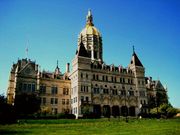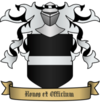Vorbarra District (Barrayar)
| Vorbarra District | |||
|---|---|---|---|
|
|||
| Motto: Uslysh my zakaz | |||
| Country | Barrayar | ||
| District | Vorbarra | ||
| Established in current form | 2792 | ||
| Founder | Emperor Dorcas | ||
| Seat | Vorbarra District Capitol | ||
| Government | |||
| • Count Vorbarra | Serg Vorbarra | ||
| Population (3003) | |||
| • Total | 15,678,032 | ||
Vorbarra's District is one of the sixty Barrayar Northern Districts. It is ruled by Count Vorbarra, the head of House Vorbarra, who is also the Emperor of the Barrayaran Imperium. The district capital, Vorbarr Sultana, is also the overall capital. The District is made up of the ancestral domains of the Vorbarra dynasty, conquered and ruled before the proclamation of the Imperial destiny. It has the highest per-capita GDP among Districts on Barrayar, and the second highest of regions in the whole Empire.
Contents
Geography
Vorbarra District has a land area of 115,344 square kilometres: it is composed of geographical regions centred around Vorbarr Sultana. Around the capital, urbanization fills a first concentric ring commonly known as the "Small Ring", and extends into a second outer ring known as the "Large Ring". The Small Ring consists of the plains around the Star River, while the Large Ring is part of the hills and highlands which occupy the northern parts of the Northern Great Plains.
The Star River (also known as simply "Starred") runs through the District. The Star River has many tributaries. It is Northern Continent's largest river and the planet's second largest after the Löhr. The District is between an area of lowland called the Great Basin and the highlands and hill country prodromes of the Northern Massif, an area of highlands that are higher than the surrounding countryside but far lower than the Dendarii Mountains.
Economy
The Vorbarra District is Barrayar's premier centre of economic activity, with a gross domestic product (GDP) of IM 823 billion.
The District economy has been gradually shifting towards high-value-added service industries and high-tech manufacturing since 2930s. The District's most intense economic activity takes place in the suburban regions, while external lands are devoted to agriculture and other industries. Tourism is a significant component of the regional economy, since the region includes Vorbarr Sultana and other historical cities. The District economy has been gradually shifting towards high-value-added service industries and high-tech manufacturing since 2930s. The District's most intense economic activity takes place in the suburban regions, while external lands are devoted to agriculture and other industries. Tourism is a significant component of the regional economy, since the region includes Vorbarr Sultana and other historical cities.
According to the last census, 49.0 percent of the local workforce is in commerce, transportation, and market services: 33.0 percent worked in non-market services (public administration, education, human health and social work activities); 10.6 percent worked in manufacturing, mining, and utilities; 4.3 percent worked in construction; and 3.1 percent worked in agriculture.
Government

The Districts's capital is Vorbarr Sultana. Vorbarra District is organized into three branches of government – the executive branch consisting of the Count Vorbarra and his own cabinet Secretaries; the legislative consultative committee, consisting of the Assembly of the District; and the judicial branch consisting of the District Supreme Court and of lower courts.
The Vorbarra District executive branch consists of the Count Vorbarra and the cabinet which he appoints. The Vorbarra District legislature consists the Count Vorbarra which operates in consultation with the Assembly of the District, an assembly composed by 120 individuals.
Vorbarra District is divided into 50 Provinces: they are the legal subdivisions of the District. The provincial government provides services such as vital records, property assessment and records, tax collection, public health, health care, social services, libraries, flood control, fire protection, animal control, agricultural regulations, building inspections, ambulance services, and education departments in charge of maintaining District-wide standards. In addition, the Province serves as the local government for all unincorporated areas.
The District has 482 incorporated cities, towns and villages; of which 400 are villages, 48 towns and 32 are cities. The District recognizes two kinds of cities: charter and general law. General law cities owe their existence to District law and are consequently governed by it; charter cities are governed by their own city charters.
District Cabinet
The Vorbarra District Cabinet consists of The Count Vorbarra and his own cabinet Secretaries, each overseeing a Department or a District Bureau; Secretaries are appointed, dismissed and removed at Count's will. The Count Vorbarra, which is also the Emperor of Barrayar, may also appoint the Crown Prince (currently Gregor Vorbarra) as his Council Delegate and Steward of the District in order to let the Emperor deal with national government issues; he also may appoint another person to this position, although the last person to be appointed to this position without being an Emperor's relative or a Regent was John Piembroke, one of the closest Yuri's collaborators until the defenestration of the Privy Council.
Secretaries are the heads of the District-level government departments and most often are professionals who arose through the bureaucratic ranks. The executive branch is composed of the principal departments:
- Department of Agriculture;
- Bureau of Security;
- Department of Education;
- Department of Health Care;
- Department of Local Government;
- Department of Labour;
- Department of Military and Veterans Affairs;
- Department of Natural Resources;
- Department of Personnel and Administration;
- Department of Public Health and Environment;
- Department of Transportation;
- Department of Economy.
Assembly of the District
The Assembly of the District is the legislative consultative assembly of the Vorbarra District. It is a unicameral body consisting of 120 members. New legislators convene each new six-year session. The Assembly is in session year-round and consists of 80 elected Representatives and 40 Councilors appointed by the Count: Representatives are elected every six years in single-member constituencies among the candidates approved by the Count's government according to the District Law. The appointment as Senator of the District is for life and guarantees higher privileges than the election as Representative; the Count can appoint up to 40 members of the Assembly by choosing in the following categories:
- Representatives after three full terms (also non consecutive);
- District Secretaries (also dismissed ones);
- Ambassadors of the Empire, whether originating in the Vorbarra District;
- The Chief Justice of the District;
- Generals and Admirals, whether originating in the Vorbarra District;
- The senior officers of the Vorbarra District Militia;
- Those with services or merits eminent honour the Vorbarra District;
Male Princes of the Imperial Family are full members outside the 120 ordinary members. They come to join at the age of twenty-one and earn the right to vote at the age of twenty-five. Currently Crown Prince Gregor is a voting member, while Prince Vorbarra has not yet earned the voting right.
The Assembly of the District formally "advises" the Count, who is fully enabled to proceed without or against the opinion of the Assembly; however it is very rare the case where the Count Vorbarra would forcibly govern against the Assembly.
Law enforcement
Unlike the other 59 traditional (Count-ruled) Districts of the Northern Continent, the Vorbarra District does non have its own police service, relying on the Imperial Police Force, the Constabulary which operates on the whole Southern Continent. In this case, the District Command has the same jurisdiction of the apposite Group Command; the State Councillors, 1st class in charge of The His Majesty's Own Vorbarr Sultana Municipal Guard is directly subordinated to the District Bureau of Public Security.
Emperor's Own Militia
The District Militias are preventive District forces responsible for maintaining public order within each District, and are subordinate to the District Count; Vorbarra District is no exception, and it maintains the Emperor's Own Militia. The Militia is distinct from the Internal Troops, which collaborate with; it also acts as reserve troops and ancillary forces of the Imperial Service. Training is weighted more heavily toward riot control and rural manhunt matters, but counterinsurgency training is also carefully included. Arms and equipment of District forces include machine guns and armoured cars, in addition to other items generally associated with police.
The Emperor's Own Home Guard is currently commanded by Colonel (ret.) Thomas Vorkerry, a retired officer originating from Vorbarr Sultana; most of the command staff is made up of local retired military officers, both to maintain a set of advanced capabilities and to award distinguished military professionals.
The primary mission of Emperor's Own Home Guard is ostensibly preventive policing for the maintenance of public order in the Vorbarra District; secondary missions include uprising suppression, riot control support, facility surveillance, local garrisoning and disaster relief, also outside the Vorbarra District (previous formal request of the competent body).
The Militia is operationally organized into Regional Commands (Barrayaran Russian: Regionalnye Komandy), Home Guard Battalions, Companies, and Platoons. The size is notably smaller than other Countly Militias, mostly due to the fact that within the Vorbarra District there are many of the most elite units of both the Imperial Police Force (which provide policing services) and the Imperial Service, the latter ones tasked with garrison and surveillance duties.
The Vorbarr Sultana Regional Command is the main and foremost command and it is responsible for the capital city and its immediate surroundings: it includes two Battalions and several auxiliary offives. Ordinarily, an important town other than Vorbarr Sultana is policed by a single Battalion (which equals the relevant Regional Command), while other settlements are policed by dedicated companies within their Battalion-level command or by the whole Battalion without difference, while smaller districts are garrisoned by a Platoon (the latter ones mostly led by Warrant Officers).
Alongside the territorial units, which may be mobilized for a major operation on a medium notice, there are also some special unit which may be mobilized on a short notice or even are in stand-by as routine condition: a Mounted Squadron (company level), an Highway Patrol Battalion, a Riot Control Battalion, a Special Police Operations Battalion.
The Emperor's Own Militia wear black uniforms with silver trims and buttons; while rank insignia are those adopted by the Imperial armed corps, its members do wear additional rank/functional insignia, mostly on their shoulders, but also on the breast, as well as on the uniform sleeves. The Militia is widely noted for the orderly uniforms worn by its members.


